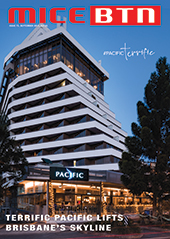Cebu Pacific dominates Manila-Sydney run for passengers and cargo
- BTN News
- Monday, 19 June 2017
Data from the Bureau of Infrastructure, Transport and Regional Economics (BITRE) of Australia show Philippines carrier Cebu Pacific carried 43,512 passengers, about 42 per cent of all Q1 cabin traffic on the Manila-Sydney, Australia route, the highest of the three carriers on the run, the others being Qantas and Philippine Airlines.
Cebu offers about 40 per cent of all seats on the route.
The BITRE report said that from January to March 2017, passenger traffic between Manila and Sydney totalled 104,446, up seven per cent versus the same period last year. The growth was dominated by Cebu Pacific, which carried 16 per cent more passengers, up from the 37,640 reported in the first quarter of 2016. Load factor for Cebu Pacific on the Manila-Sydney route averaged 78 per cent.
“We are very pleased to see that the Cebu Pacific effect continues across one of our strongest international markets. Our goal is to make flights affordable, accessible and available to a greater number of travellers. These numbers do not only showcase the Philippines as a flourishing destination, but it also shows our strong commitment to remain and further stimulate our key market in Australia,” said Candice Iyog, Cebu's vice president for Marketing and Distribution.
Aside from the growth in passenger volume, Cebu Pacific claims it also led the Manila-Sydney air cargo market. Cebu said it flew 1,131 tons of cargo between Manila and Sydney in the first three months of 2017, covering 49 per cent of the total 2,325 tons carried by the three carriers, up from 1,567 tons carried in the same quarter last year.










